Building off of my previous question, with thanks to @AndrewGB for the code modifications (Specifying fill color independent of mapping aesthetics in boxplot (R ggplot)), I have a dataset with 24 bars (individual categories with a status high/low).
Within my categories, I have a category type, which means I need to show only a subset of the legend keys (i.e., unique colours only). In the toy data I've provided, it would be akin to "Plant Type A" (pink) and "Plant Type B" (blue) with a "Control" (grey).
My intended output is to plot only the unique legend colours and then give these keys customizable labels.
library(ggplot2)
library(data.table)
dat <- as.data.table(cbind(iris, Status = rep(c("High", "Low"), 75)))
dat <- rbind(dat, data.frame(Petal.Width = sample(iris$Petal.Width, 30, replace = T),
Species = "Control",
Status = "Control"), fill = T)
ggplot(dat, aes(x = Species,y = Petal.Width, fill = Status)) +
geom_boxplot(position = position_dodge(width = 0.9)) +
scale_fill_manual(values = c("red", "pink",
"red", "pink",
"blue", "slateblue", "grey"))
ggplot(dat, aes(x = Species, y = Petal.Width, fill = interaction(Status,Species))) +
geom_boxplot(position = position_dodge(width = 0.9)) +
scale_fill_manual(values = c("red", "pink",
"red", "pink",
"blue", "slateblue", "grey"))
The legends would then be:
Plant Type A: High Status (red)
Plant Type A: Low Status (pink)
Plant Type B: High Status (blue)
Plant Type B: Low Status (slateblue)
Control - no status (grey)
I've looked into the override.aes,guides and scale_fill_manual - breaks, but cannot seem to get this working without messing with the colours plotted.

